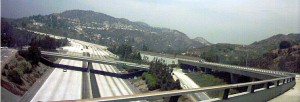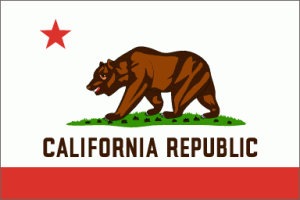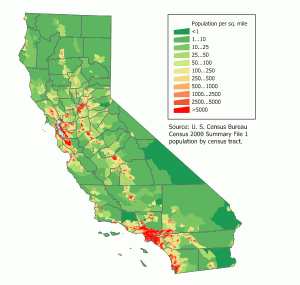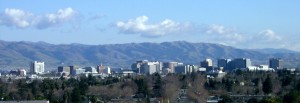California – the Most Populous State in The United States
California has so many sights and scenes – from deserts to mountains to the Pacific Ocean and all the cities, people, and places therein.
I live in California so this section is devoted to information about the state.
Depending on where you live in the state, some destinations you can drive to. While others you can fly directly to if they are in any of the larger cities.
100 Things To Do In California
by Caifornia Delicious
Published on Youtube on Jan 15, 2015
California’s population had reached 38,041,430 (2012 est) by 2012, making it the most populated state.
According to the Sacramento News & Review, California’s population will increase to 50 million people by 2025. It is now 39.5 million people as I check Wikipedia in March 2018.
California adds around 400,000 people a year according to the State Population Bureau.
Several big California Cities hold Lots of People
More than 12 percent of U.S. citizens live in California. Its population is greater than that of all but 34 countries. The state has eight of the top 50 US cities in terms of population.
Los Angeles is the nation’s second-largest city with a population of 4,018,000 people.
San Diego is the 8th largest city. San Jose (10th), San Francisco (14th), Long Beach is the 34th largest city. Fresno (36th), Sacramento (37th) and Oakland (44th) ALL largest city by population.
Los Angeles County has held the title of most populous county for decades. It is more populous than 37 US states. Note these statistics may have changed slightly.
California compares in size with Sweden. With over 160,000 square miles (411,000 km2) the landscape of this state is vast and varied.
The state contains extremes in elevation. Mount Whitney rises to 14,505 feet (4,421 meters). It is the tallest mountain in the lower 48 states.
Death Valley at almost 300 feet below sea level being the lowest elevation.
Climate In California
The climate varies from Mediterranean to subarctic. A large part of the state has a Mediterranean climate, with cool, rainy winters and dry summers.
Along the Pacific coast there is often summer fog. The fog sometimes extends inland for many tens of miles. Farther inland you will encounter colder winters and hotter summers.

California’s Geography
In Northern California and upper parts of the state average higher annual rainfall than the south. California’s mountain ranges influence the climate as well.
Some of the rainiest parts of the state are west-facing mountain slopes. Northwestern part of the state has a temperate climate.
The Central Valley has a Mediterranean climate but with greater temperature extremes than the coast. Its high mountains, including the Sierra Nevada, have an alpine climate.
They have snow in winter and mild to moderate heat in summer. Sometimes, however, there is not enough snow or rain and the state has a severe drought.
California is bordered to the north by Oregon. Nevada is to the east. Arizona is southeast and Baja California, a state of Mexico, to the south.
California has wide ranging geography. It ranges from the Pacific Coast in the west, to the Sierra Nevada mountains in the east.
In the northwest – from the Redwood–Douglas-fir forests. The Mojave Desert areas are in the southeast.
In the center of the state is the Central Valley, a major agricultural area. California also contains both the highest and lowest points in the contiguous United States. Highest is Mount Whitney. Lowest is Death Valley.
We don’t receive wisdom; we must discover it for ourselves after a journey that no one can take for us or spare us. – Marcel Proust
California has a Long Coastline and Lots of Earthquakes
The state has the 3rd longest coastline of all states (after Alaska and Florida). Earthquakes are a common occurrence. That’s due to the state’s location along the Pacific Ring of Fire. About 37,000 earthquakes are recorded annually.
Nearly 45 percent of the state’s total surface area is covered by forests. Its diversity of pine species is unmatched by any other state.
California contains more forestland than any other state except Alaska. Many of the trees in the California White Mountains are the oldest in the world.
One Bristlecone pine has an age of 4,700 years. Many others are hundreds to thousands of years old.
In the southern part of the state is a large inland salt lake, the Salton Sea. The south-central area is a desert called the Mojave Desert.
Northeast of the Mojave Desert is Death Valley. Its the lowest and usually the hottest place in North America being 282 feet below sea level.
Almost all of southeastern California is arid, and hot desert. It has routine extreme high temperatures during the summer. The southeastern border of California with Arizona is the Colorado River.
The southern part of the state gets about half of its water from there.
Immigration in California
In 2010, for the first time since the California Gold Rush in the mid 1800s, California-born residents make up the majority of the state’s population.
In 2011, the state saw a shift in its immigration pattern. It now has more people coming from Asia and less from Latin America.The state’s population of undocumented immigrants has been shrinking in recent years. Its due to increased enforcement and a slumping economy.
The number of migrants arrested attempting to cross the Mexican border in the Southwest plunged from a high of 1.1 million in 2005 to just 367,000 in 2011.
Illegal aliens constituted an estimated 7.3 percent of the state’s population. It is the third highest percentage of any state in the country, totaling nearly 2.6 million. More than half originate from Mexico.
Illegal aliens make up more than ten percent of the population in Los Angeles, Monterey, San Benito, Imperial, and Napa Counties.
The last four of those counties have significant agricultural industries that depend on manual labor.

Racial and Ancestral Makeup
According to the U.S. Census Bureau in 2011:
- 74% White (40% Non-Hispanic White)
- 14% Asian
- 6.6% Black or African American
- 2% Native American
- 5% Multiracial
- 0.4% Native Hawaiian or Pacific Islander
- 38% are Hispanic or Latino (of any race)
- 62% of the population is Non-Hispanic (of any race)
 The main ancestries of California’s residents in 2009 by survey:
The main ancestries of California’s residents in 2009 by survey:
- 31% Mexican
- 10% German
- 8% Irish
- 7% English
- 4% Italian
Major Cities in California
These are some of the major cities in the state.
- Sacramento – The laid-back state capital with historic area of the city, Old Sacramento.
- Bakersfield– The world’s largest Basque population outside of Spain is found here and fine Basque restaurants abound.
- San Francisco– Golden Gate Bridge, Alcatraz, America’s largest Chinatown, cable cars, and Victorian houses
- Fresno– Gateway to Yosemite.
- Los Angeles – The state’s largest city, and 2nd-largest in the nation. L.A. is home to Hollywood, Venice, The Getty Center, and Griffith Park.
- Palm Springs– Desert recreation with golf, spas, resorts, casinos, and the famous aerial tramway.
- San Diego– Balboa Park, Old Town, SeaWorld, San Diego Zoo, and nearby Tijuana, Mexico.
- San Jose– South of San Francisco, home of the Winchester Mystery House, and the center of Silicon Valley, which is home to many technology companies.
- Santa Cruz – A central coast city. The home of the historic Santa Cruz Beach Boardwalk, Mission Santa Cruz, and the Mystery Spot.
Other Destinations and Parks
- Disneyland
- Lake Tahoe — A large, gorgeous lake great for water sports and excellent skiing in the winter.
- Napa Valley — Spas, wine tasting, wine tours.
- Big Sur — one of the most scenic spots along the Pacific Coast Highway
California’s National Parks
- Channel Islands National Park – five remarkable islands (Anacapa, Santa Cruz, Santa Rosa, San Miguel, and Santa Barbara) and their ocean environment
- Death Valley National Park – A place of legend and a place of trial
- Joshua Tree National Park
- Lassen Volcanic National Park – witness a brief moment in the ancient battle between the earth shaping forces of creation and destruction
- Redwood National Park – Stand at the base of a coast redwood and even the huckleberry bushes tower over you
- Sequoia and Kings Canyon National Parks – These twin parks hold monuments to nature’s size, beauty, and diversity
- Yosemite National Park – one of the first wilderness parks in the United States
California-Mexico Border
California’s proximity to the Mexican border makes it easy for people to go to Mexico and vice versa. Visitors should be cautious while in areas near the border.
- Know where you are at all times, follow good safety procedures and use common sense when making decisions.
- Do not pick-up hitch hikers.
- Keep valuables, including spare change, out of sight and lock your vehicle.
- Avoid traveling in well-marked but unofficial “trails.”
- Avoid hiking or camping in areas of major border activity. If you are visiting a national or state park, consult park staff to help plan backcountry travel in safer areas.
- Report any suspicious behavior to the U.S. Border Patrol.
Crossing The California-Mexico Border
Thousands of U.S citizens visit Baja California, Mexico from Southern California every year. The majority of travelers are returning from an enjoyable experience.
 However, a minority of travelers do experience difficulties and serious inconveniences while traveling to Mexico. If you are driving there (probably not a good idea) be sure you have auto insurance that covers you in Mexico.
However, a minority of travelers do experience difficulties and serious inconveniences while traveling to Mexico. If you are driving there (probably not a good idea) be sure you have auto insurance that covers you in Mexico.
Before traveling to Mexico, ensure that you have the proper documentation. Be familiar with the recommendations for foreign travel. Check with the U.S. Department of State and Bureau of Consular Affairs.
There are six border crossings between California and Mexico. The United States operates a consulate in Mexicali.
Mexico operates Consulates in Calexico, Fresno, Los Angeles, Oxnard, and Sacramento. Also in San Bernardino, San Diego, San Francisco, San Jose and Santa Ana.
This is just a small sample of what’s here in California. There are lots of attractions to visit and enjoy and so much more. Read the articles below for more information.
About the Author
Yolky says to also visit his Travel Quiz Weekly site.
More about California
- Visit California Anytime Infographic Pt.1

- Northern California – Home of Largest Trees in the World
- Southern California – the Most Populous Region of the State
- 5 Southern California Attractions for the Budget Minded
- Quiz #5 Large California Coastal Cities











